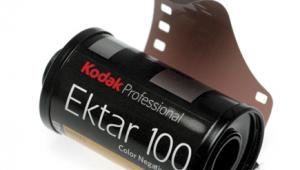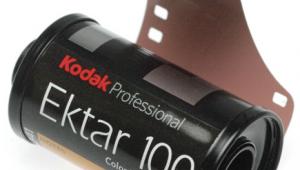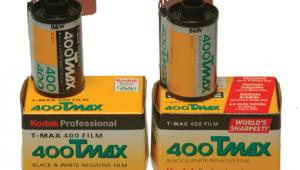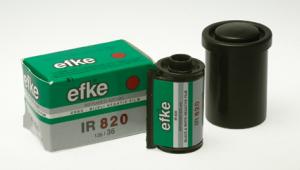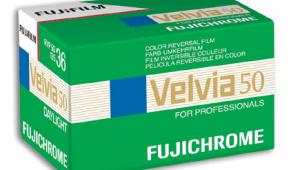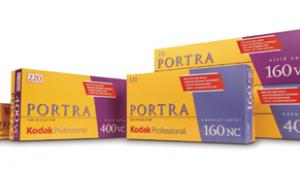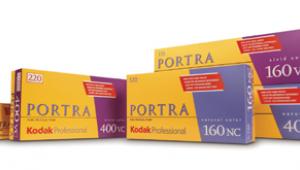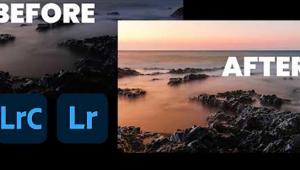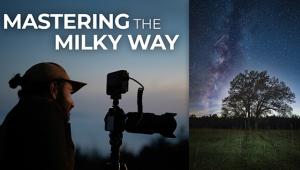Kodak’s Ektar 100 Medium Format Film; If You Want That “Film Look,” Just Shoot Film! Page 2
Shooting Film In A Digital World
My initial studio tests were made using my ancient Pentax 6x7 and a 75mm lens that I borrowed from Adorama’s (www.adorama.com) Used Department. Thanks and a tip of the Farace chapeau to Adorama’s Jack Gold. It was during a studio shoot with a wonderful new model that I made a few discoveries. I forgot that the Pentax 6x7 has an oh-so-slow top X-sync speed of 1⁄30 sec and I shot
the session at 1⁄60 sec, giving me beautifully exposed half-pictures. The other part of the discovery is that half of a 6x7cm film frame is bigger than a 35mm film frame.
 |
|
|
As Sonny and Cher used to sing, “the beat goes on,” giving me insight into what film photographers must deal with in this digital millennium. Ektar 100, not surprisingly, is processed in standard C-41 chemistry and while fewer outlets will process 120 roll film some still do. In the past when I shot film for tests in Shutterbug, I used a local camera store that was close to where Mary works but she doesn’t go downtown much anymore, so I tried a different supplier that is located near where she and I often have lunch. Bad idea. They scratched the film in processing (no extra charge though) and the scans were at best mediocre, so it was back to our original supplier, however inconvenient. I’d like to give a shout out to Gretchen and Blaze at the Wolf Camera store in downtown Denver for great and scratch-free processing and nice, clean scans. And with a two-hour turnaround most days, they’re fast, too.
 |
|
|
Reciprocity may be unknown in the digital world but is a fact of life for film, yet Kodak recommends no adjustments for long and short exposures or even any filter correction or exposure compensation for exposures from 1⁄10,000 sec to 1 second. For critical applications with longer exposure times, Kodak hedges their bets and suggests that you “make tests under your conditions.” I made my own tests under low-light conditions and found that with exposures up to 5 seconds I didn’t experience problems with color shifts or variance in exposure and even when over or underexposed the grain structure remained fine, tight, and controlled.
When testing this film I ran into several photographers who were also film shooters and although I talked with one major retailer who told me that many weddings pros were “going back” to shooting film, none of the film shooters I spoke with were loading their 120 film into Hasselblads. Nope. Instead I heard about users shooting a litany of vintage or funky cameras, including Holga, Seagull, and Yashica.
 |
|
|
There’s no doubt that Kodak’s Ektar 100 in 120 rolls will be the top choice for fine art photographers shooting film. An unbeatable combination of super color saturation on microscopic grain makes it a formidable combination. A roll of Ektar 100 costs $3.69 and a Propack of five is $17.95. Interestingly (to me anyway), I saw a pack of five SanDisk 2GB SD cards on sale recently for $49.95. As Sly used to sing back in the days when every photographer shot film, “different strokes for different folks.”
Ektar 100’s Print Grain Index
The Print Grain Index (PGI) number refers to a method of defining graininess in a print made with diffuse-printing illumination. It replaces the old familiar rms (root-mean-square) granularity rating and has a different scale that cannot be easily compared to rms. Instead PGI uses a uniform perceptual scale, where a change of four units equals a barely noticeable difference in graininess that’s visible to 90 percent of the observers. A PGI rating of 25, for example, on the scale represents the approximate visual threshold for graininess. A higher number indicates an increase in the amount of graininess observed. The standard print-to-viewer distance for all print sizes is 14”, a typical viewing distance for a 4x6” print. Out here in the real world, larger prints are likely viewed from distances greater than 14”, which (surprise, surprise) reduces apparent graininess. For 4x6” and 8x10” prints, the PGI for a 6x6” negative from Ektar 100 is less than 25. For a 16x20” print, it’s 38. By comparison, a 16x20” print made from an Ektar 100 35mm negative is 66—almost double. Now you know why medium format rules.
For more information, contact the Eastman Kodak Company at: www.kodak.com.
- Log in or register to post comments





